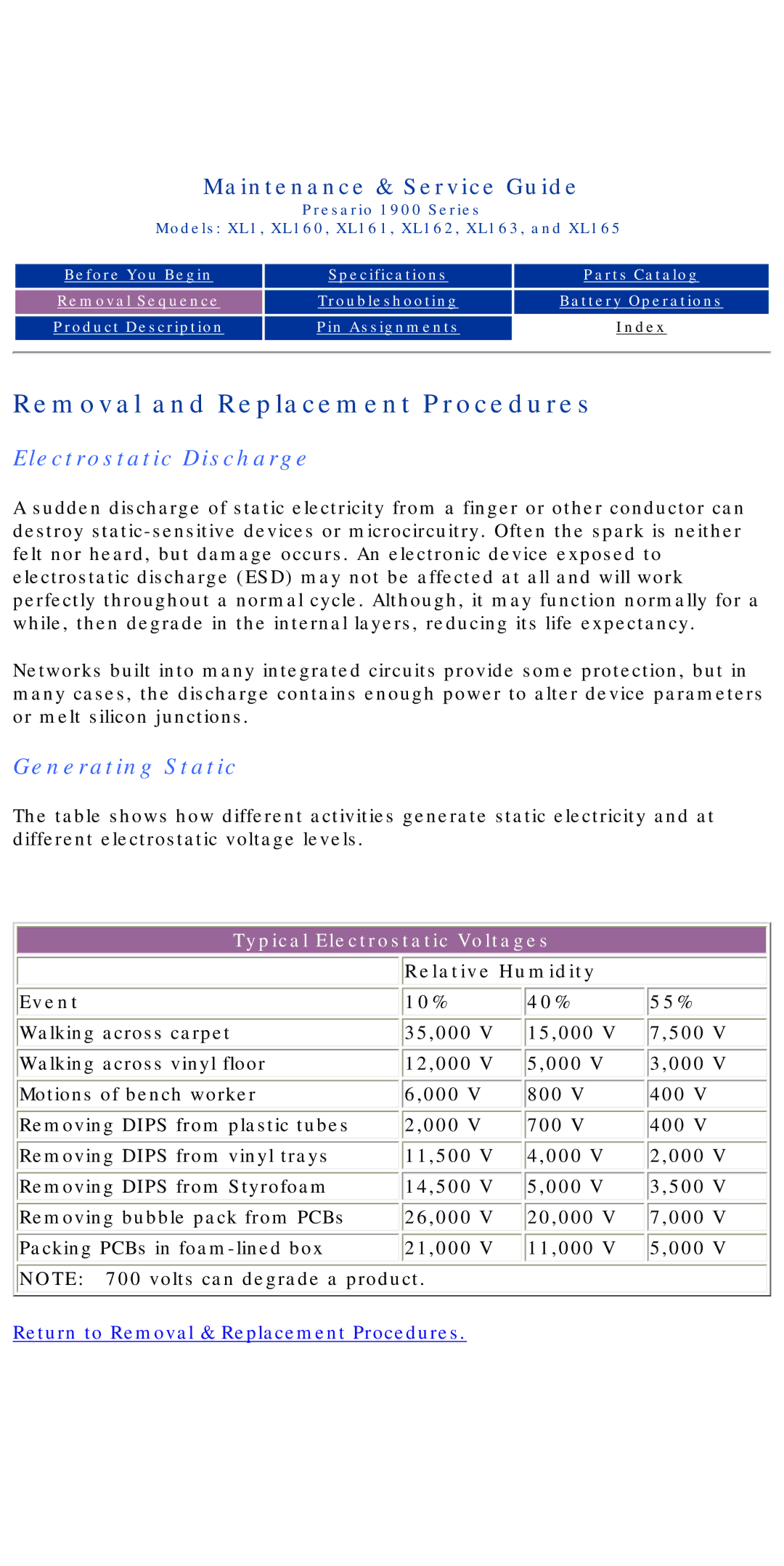
Maintenance & Service Guide
Presario 1900 Series
Models: XL1, XL160, XL161, XL162, XL163, and XL165
Before You Begin |
| Specifications |
| Parts Catalog |
|
|
|
|
|
Removal Sequence |
| Troubleshooting |
| Battery Operations |
|
|
|
|
|
|
|
|
|
|
Product Description |
| Pin Assignments |
| Index |
|
|
|
|
|
Removal and Replacement Procedures
Electrostatic Discharge
A sudden discharge of static electricity from a finger or other conductor can destroy
Networks built into many integrated circuits provide some protection, but in many cases, the discharge contains enough power to alter device parameters or melt silicon junctions.
Generating Static
The table shows how different activities generate static electricity and at different electrostatic voltage levels.
Typical Electrostatic Voltages
| Relative Humidity |
| |
Event | 10% | 40% | 55% |
Walking across carpet | 35,000 V | 15,000 V | 7,500 V |
Walking across vinyl floor | 12,000 V | 5,000 V | 3,000 V |
Motions of bench worker | 6,000 V | 800 V | 400 V |
Removing DIPS from plastic tubes | 2,000 V | 700 V | 400 V |
Removing DIPS from vinyl trays | 11,500 V | 4,000 V | 2,000 V |
Removing DIPS from Styrofoam | 14,500 V | 5,000 V | 3,500 V |
Removing bubble pack from PCBs | 26,000 V | 20,000 V | 7,000 V |
Packing PCBs in | 21,000 V | 11,000 V | 5,000 V |
![]() NOTE: 700 volts can degrade a product.
NOTE: 700 volts can degrade a product.
Return to Removal & Replacement Procedures.
